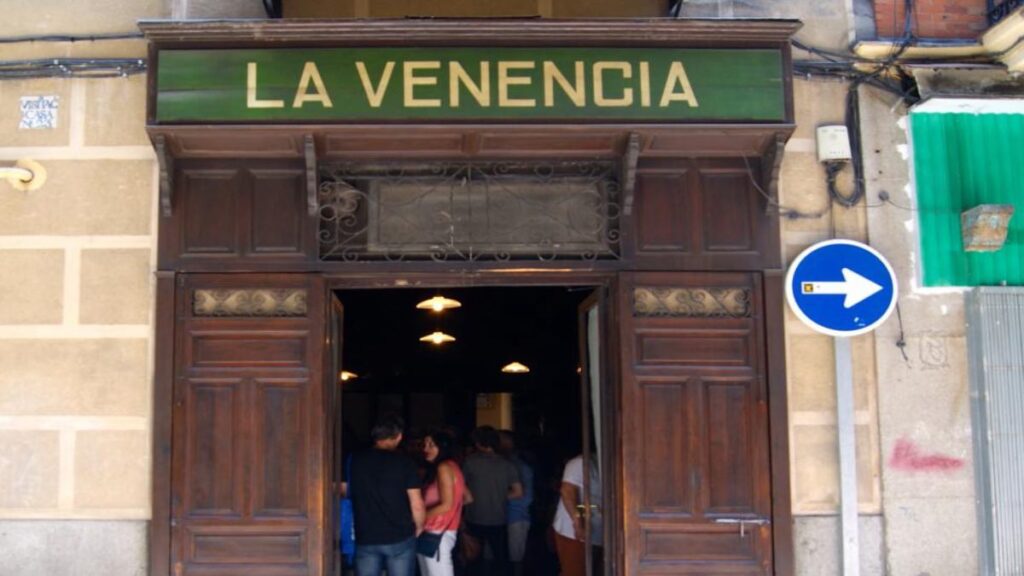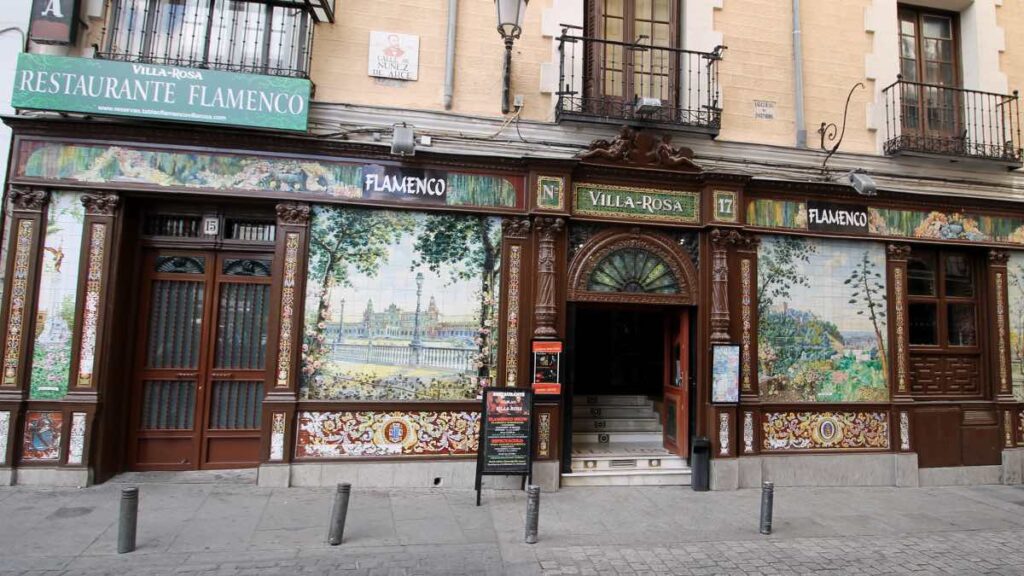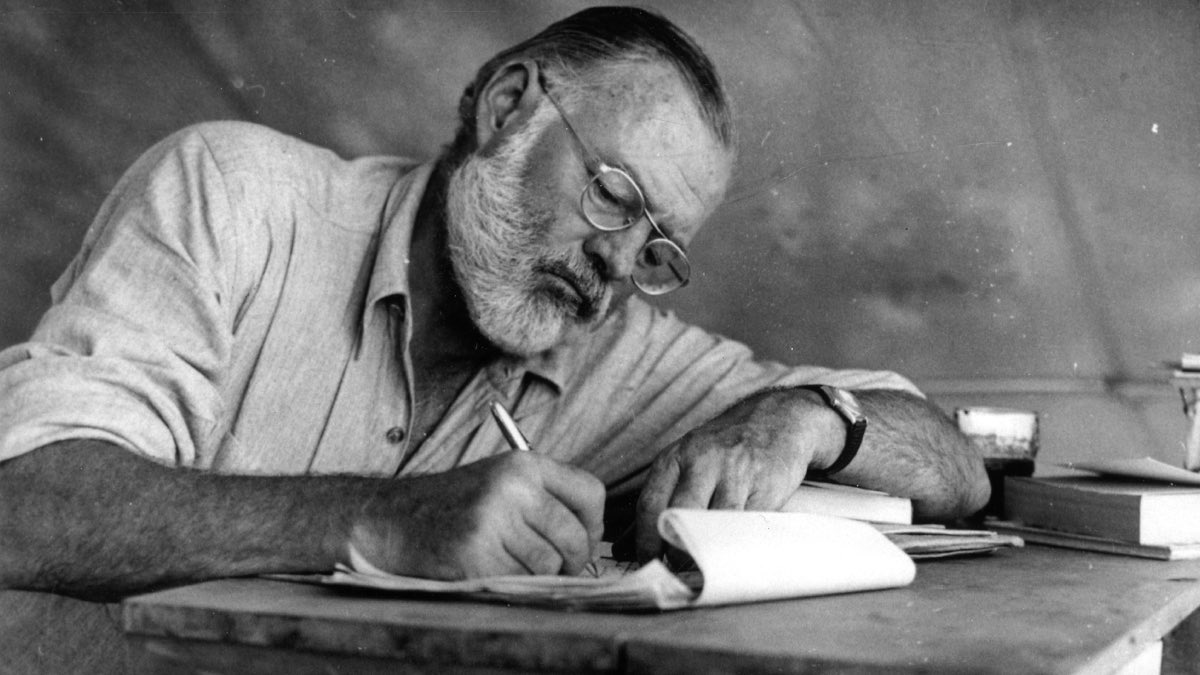Click here to read the Spanish version.
It was in 1923 that Ernest Hemingway first visited Madrid and, from then on, he fell in love with the city. He even commented that “Madrid is the most Spanish of all the cities in Spain. When you can have the Prado and at the same time El Escorial two hours to the north and Toledo to the south and a beautiful road to Ávila and another beautiful road to Segovia, which is not far from La Granja, you are overcome with despair at the thought that one day you will have to die and leave all that“. The Nobel laureate was also fascinated by other Spanish places such as Pamplona – he went to the San Fermines nine times – but his favourite was always Madrid.
During his long stays in the capital, the writer covered the Civil War, among other historical events, and also wrote several novels. In addition, Hemingway enjoyed Madrid in all its forms: from the bullfighting to the museums and, above all, the gastronomy and bar life. As a tribute to the famous American writer and journalist, we have prepared a route through the bars he frequented and which can still be visited today (although some have changed considerably). Take note of this Hemingway’s Madrid.
Restaurante Botín (Cuchilleros, 17)
Hemingway had a very special bond with the Botín restaurant. He often went there to eat roast suckling pig with wine and he became close friends with Emilio González, father and grandfather of the current owners. Moreover, in several of his novels he mentioned this legendary restaurant, as in ‘Muerte en la tarde’ (Death in the Afternoon) or ‘Fiesta’. It is even said that he tried to learn how to make paella here.
Museo Chicote (Gran Vía, 12)
Bar Chicote, founded in 1931 by Perico Chicote, is now called Museo Chicote and was also another of Hemingway’s favourite haunts. It was common to see him drinking cocktails there. In fact, to this day you can still order his favourite cocktail, the Papa Doble, which the writer himself created at El Floridita in Havana (Cuba). This place on Gran Vía also appeared in some of the writer’s works such as ‘La denuncia’ or ‘La quinta columna’.
Cervecería Alemana (Plaza de Santa Ana, 6)
Another of Hemingway’s obligatory stops was this centrally located brewery in the Plaza Santa Ana. In the 1950s, the writer would go there for an aperitif and choose a table by the window to enjoy the views of the square. In fact, in an article he published in Life magazine in 1960, Ernest referred to the place as “a good place to have beer and coffee”. Here he shared a table and drinks with what he called “the most beautiful woman in the world” and also Luis Miguel Dominguín, among other celebrities. Other famous people of the time, such as Valle-Inclán and Ava Gardner, also passed through here.
El Callejón (Ternera, 6)
Although today this establishment no longer exists, El Callejón was one of the taverns most visited by the writer. Specialising in homemade food, it was common to see him eating here and he even used to always have a table reserved for him. Later the premises were extended with the Mesón La Ternera, located at number 4 of the same street. Currently, at that number is the Cuban restaurant, Cuando Salí de Cuba, which maintains a bust of Hemingway as a tribute, according to a blog specialising in the writer.
La Venencia (Echegaray, 7)
This almost century-old tavern (it opened in 1928) was also frequented by celebrities such as Hemingway. Located in the centre of Madrid, in the heart of the Las Letras district, the writer would go there to enjoy a variety of typical tapas accompanied by a good brandy. The bar is still open, specialises in sherry wines and, as stated on their website, they don’t like photos and they don’t take reservations.

Bar Álvarez
This typical Madrid bar of the time, which no longer exists, was located in Príncipe Street. Here, according to his novel ‘Muerte en la tarde’ (Death in the Afternoon), he liked to eat prawns accompanied by beer.
Villa Rosa (Núñez de Arce, 17)

Today it is the Tablao Flameno 1911, the oldest tablao in the world that was installed in the former Villa Rosa, visited by Hemingway on several occasions. The journalist was fascinated by Spanish art and all that surrounded the folklore and roots of flamenco. The writer must have enjoyed the shows while sipping a good wine. Many other personalities have passed through this venue: from King Alfonso XIII to Lola Flores, Frank Sinatra or Ava Gardner, among many other names.
The hotels where Hemingway stayed
The places where the American writer spent long stays are also famous. In the old Hotel Gran Vía, at number 25 – today occupied by the Affiliated by Meliá -, it was common to see Hemingway during the Civil War to spend hours there writing his war chronicles in its cafeteria. Although at that time he stayed in what was once the Hotel Florida, which is now El Corte Inglés de Callao.
One of his first inns was the Pensión Aguilar, at Carrera de San Jerónimo, 32. There, specifically in room 7, the writer stayed during the dictatorship of Miguel Primo de Rivera and wrote part of his novel ‘Fiesta’. Today this establishment is still open, but renamed Hostal Aguilar, and in room 7 they pay homage to Ernest. In ‘Fiesta’ he also mentioned the Palace Hotel.
Back in the 1950s, the writer used to stay at what is now the NH Collection Madrid Suecia Hotel, which has the Hemingway Cocktail Bar in Casa Suecia, where you can emulate the Nobel Prize winner by sipping a cocktail at the bar. They serve the Hemingay Daiquiri, the writer’s version of the original Papa Doble.
After recalling the places most visited by the writer, it will be time to prepare another route through the rest of the Spanish geography where Hemingway travelled, including cities such as Pamplona, Valencia and Malaga.

